FORT HUACHUCA, Ariz. -- Personnel from various law enforcement agencies came together to participate in a unique training scenario, at Fort HuachucaAca,!a,,cs Smith Middle School, June 17.
The officers, who were from the local, state and federal government levels, took part in a one-day, active-shooter training event designed to teach them how to respond to an active-shooter situation.
An active shooter is an individual who is actively engaged in killing or attempting to kill people in a confined, populated area.
According to Lance Leising, a Federal Bureau Investigation special agent assigned to the Phoenix division, an active-shooter situation is a circumstance where law enforcement needs to respond immediately and definitely in order to stop harm from happening. Leising was the head instructor during ThursdayAca,!a,,cs training.
FBI agents have conducted active-shooter training for approximately six years, and this is the second instance this particular training was held at Fort Huachuca. The first active-shooter training was held December 2008.
Aca,!A"ThereAca,!a,,cs always been a history of active shooters,Aca,!A? Leising explained, noting there have been serious active-shooter situations in the U.S. since the mid-90s. Aca,!A"ItAca,!a,,cs something law enforcement [personnel] have to deal with. ItAca,!a,,cs a very dangerous situation for the community, and probably the most dangerous situation a law enforcement officer would face.Aca,!A?
FBI agents design the Aca,!A"ever-evolvingAca,!A? training by observing and analyzing past active-shooter situations.
Aca,!A"We try to learn from [past situations],Aca,!A? Leising said, noting, Aca,!A"We look critically to see how law enforcement officers responded, [and] to see if that was the best way to do it.Aca,!A?
FBI personnel hope the training will help law enforcement officers understand the situation is very difficult and dangerous. However, Leising explains there are effective ways for them to deal with a circumstance.
Aca,!A"As the FBI, we feel we can be a lead agency in developing a good tactic to safely handle an active-shooter situation.Aca,!A?
He notes the importance of the collaboration because Aca,!A"in an active-shooter situation you never know whoAca,!a,,cs going to be the first responders; you might have state, local [or] federal agencies. All of those agencies have different ways of training and dealing with situations.Aca,!A?
The training brings those agencies together and allows them to train collectively.
Aca,!A"ThereAca,!a,,cs a very simple manner in which we can deal with these as a group, even if weAca,!a,,cre from different agencies. They can work together and attack a situation very quickly,Aca,!A? Leising added.
Robert Coronado, patrol sergeant with the City of Bisbee Police Department and training participant, said he didnAca,!a,,ct completely appreciate the work the other agencies did until he worked with them.
Aca,!A"[The training] opens your eyes as far as what resources are out there,Aca,!A? he explained, and commends the training for being a Aca,!A"realistic situation.Aca,!A?
Law enforcement personnel involved in the training were from the 18th Military Police Detachment, Department of the Army Civilian Police, City of Bisbee Police Department, U.S.D.A. Forest Service, U.S. Criminal Investigative Division, U.S. Customs and Border Protection, U.S. Immigration and Customs Enforcement, Border Patrol and the Office of the Inspector General.
Leising said FBI personnel chose a school setting as the training grounds because itAca,!a,,cs a place where active-shooter situations have happened in the past, but noted they will train in any public area where an active-shooting situation might take place, such as a church or business complex.
Aca,!A"Not only does knowing how to react to an active-shooter situation keep the school safe, but it also keeps the officers safe and gives them confidence to handle the situation,Aca,!A? he explained.
Master Sgt. William Yorgey, operations sergeant for the Directorate of Emergency Services, says itAca,!a,,cs important for Fort HuachucaAca,!a,,cs Soldiers and Department of the Army Civilian Police to train here because this is the area they will react to. Aca,!A"ItAca,!a,,cs a good opportunity for us to work with other government agencies, and provides a unique opportunity for the other agencies.Aca,!A?
Leising also noted the importance of open communication during the training because it helps and allows the instructors the chance to see other possibilities that are out there.
Aca,!A"Tactics are always evolving,Aca,!A? he said. Aca,!A"ThereAca,!a,,cs open communication during this training. WeAca,!a,,cll stop and ask if theyAca,!a,,cve been trained on it, if they agree with it, or if itAca,!a,,cs something their department wouldnAca,!a,,ct teach.Aca,!A?
Coronado also noted the tactics and techniques they learned during the training will be passed onto other officers at his department, explaining, Aca,!A"WeAca,!a,,cre going to give basic guidelines on how to do techniques.Aca,!A?
Aca,!A"IAca,!a,,cd like to think weAca,!a,,cre moving forward. WeAca,!a,,cre forward thinking, [and] hopefully evolved prior to something actually happening,Aca,!A? Leising said.
Michael Lehnus, DACP officer with the DES and training participant, began his law enforcement career about 10 years ago, and notes the way scenarios were handled then are handled differently today.
Aca,!A"[The] training helps us keep current so we can do [our] job effectively,Aca,!A? he said.
Aca,!A"There is a way to do it. ItAca,!a,,cs fairly simple and weAca,!a,,cre trying to teach them that way,Aca,!A? Leising noted, adding, Aca,!A"ItAca,!a,,cs a traumatic situation. ItAca,!a,,cs a tragic situation. But we can handle it.Aca,!A?
In October 2009, the DES personnel began providing active-shooter training to supervisors and employees. Supervisory-level training is tailored toward commanders, managers, supervisors and school principals and employee-level training is tailored toward personnel in direct and routine contact with Soldiers and/or customers.
To date, more than 1,110 Fort Huachuca personnel have participated in active-shooter training, to include personnel in all law enforcement and fire & Emergency Medical Services; all commissary and post exchange; public affairs; all teachers and staff of the three schools on post; Raymond W. Bliss Health Center; Directorate of Human Resources; Civilian Personnel Advisory Center; and Network Enterprise Technology Command/9th Signal Command (Army).
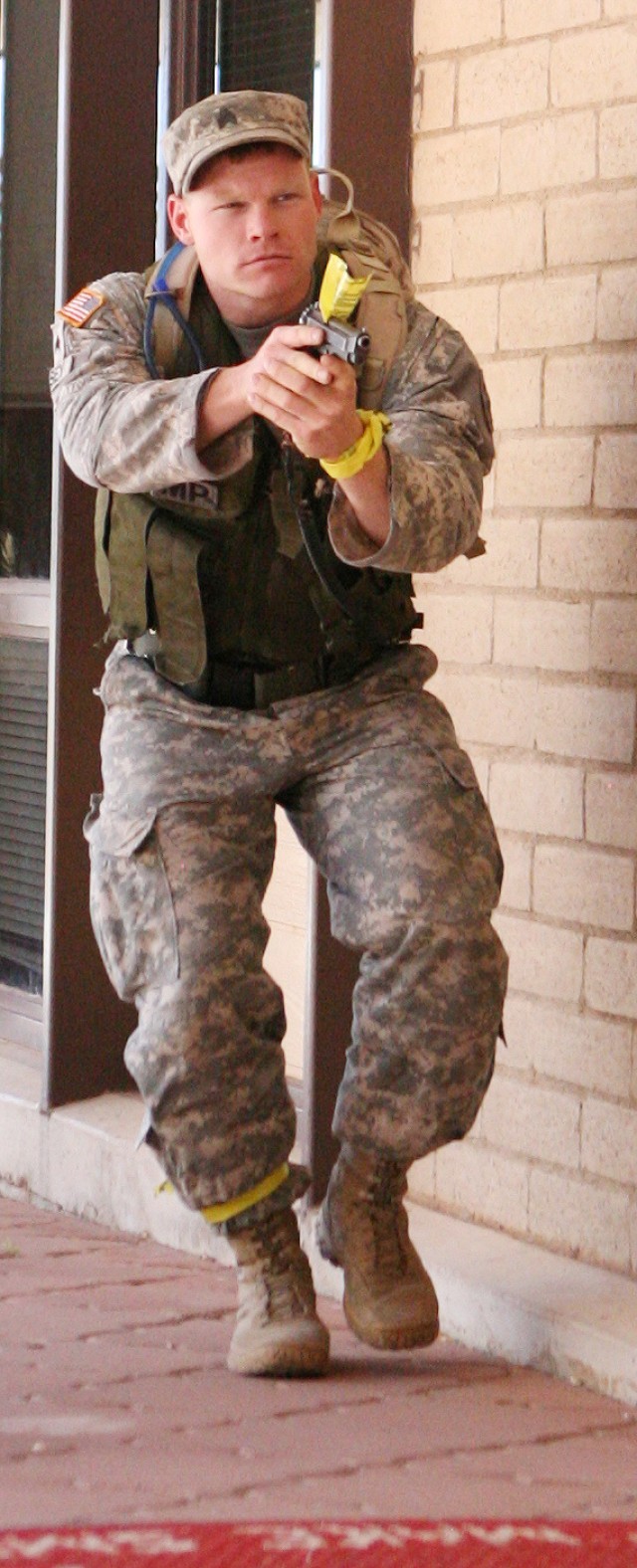
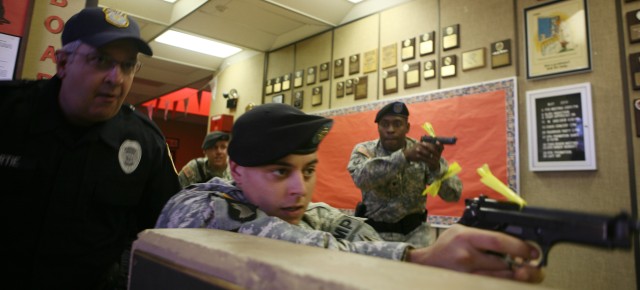

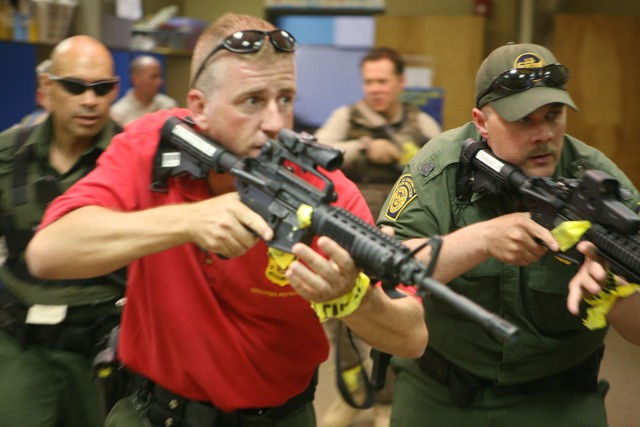

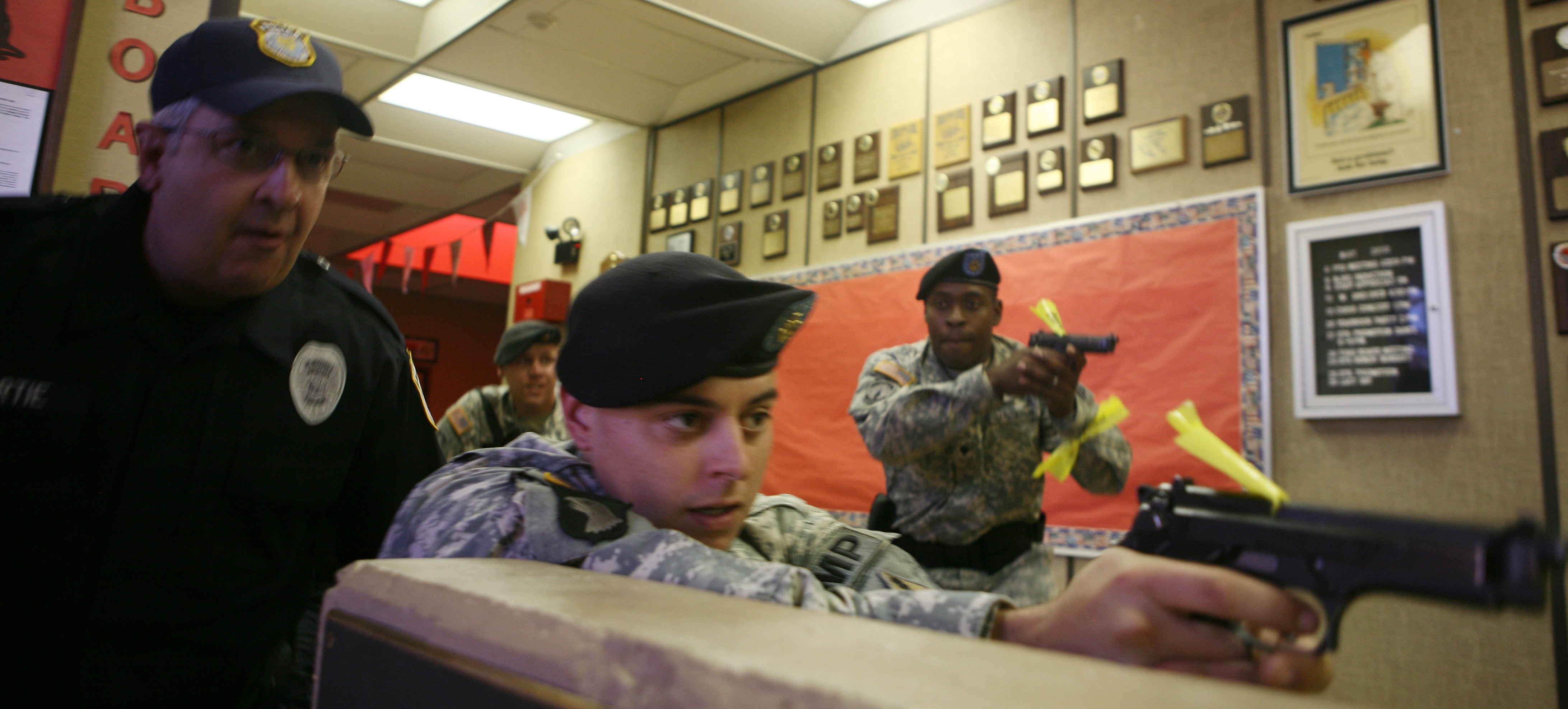
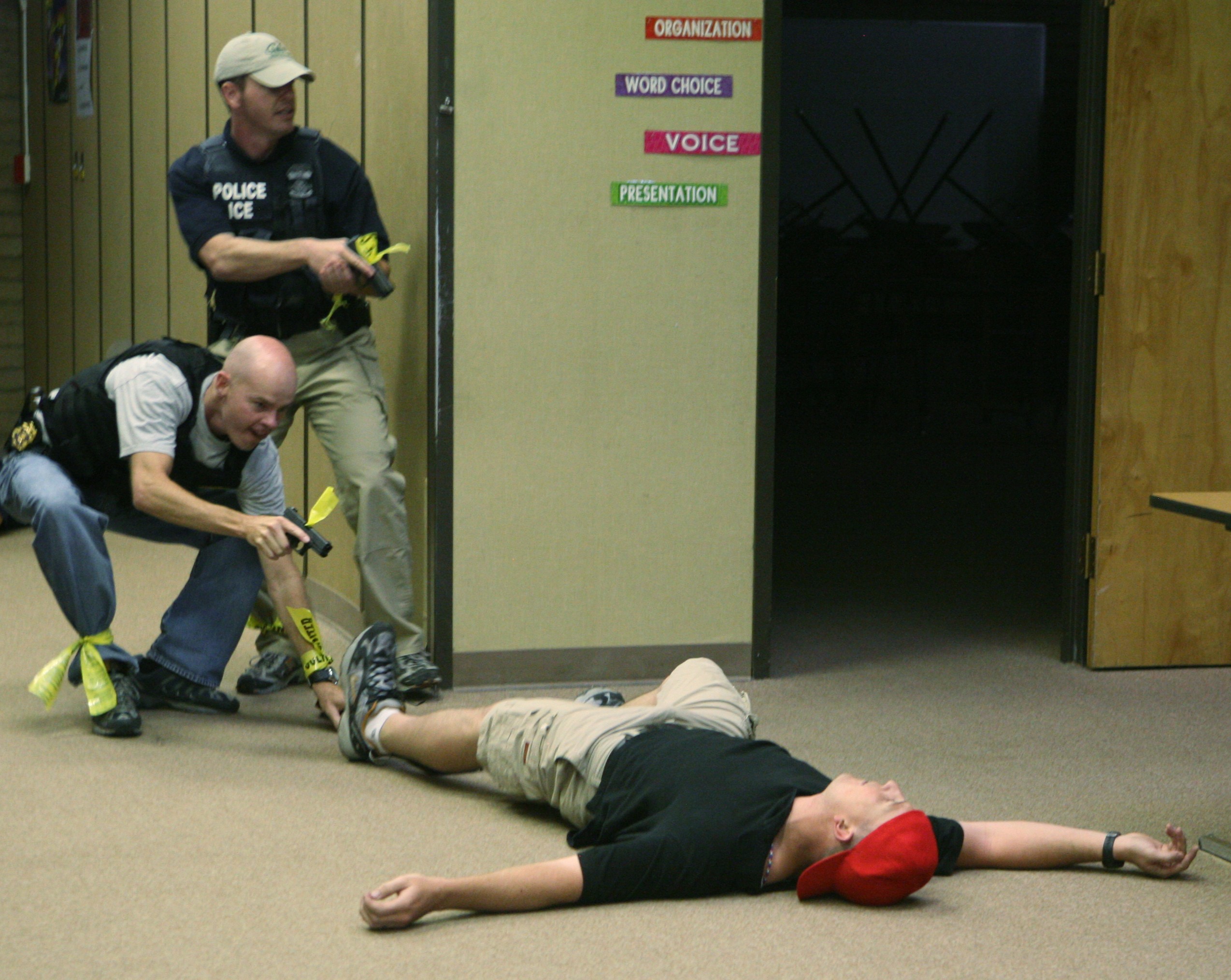

Social Sharing